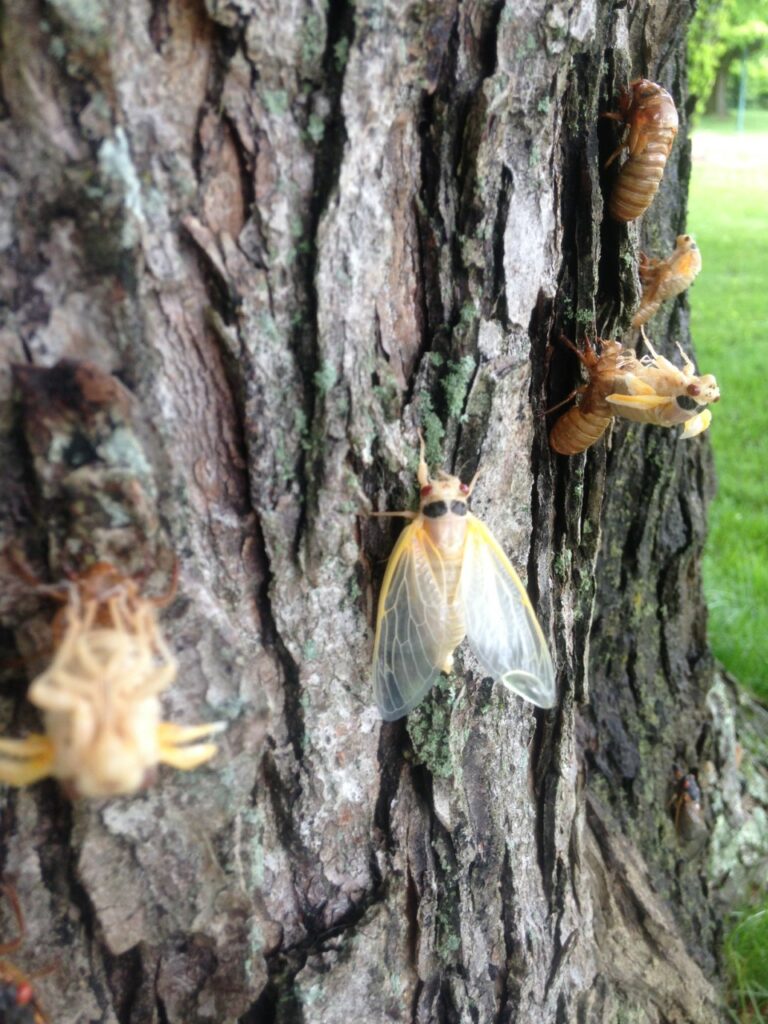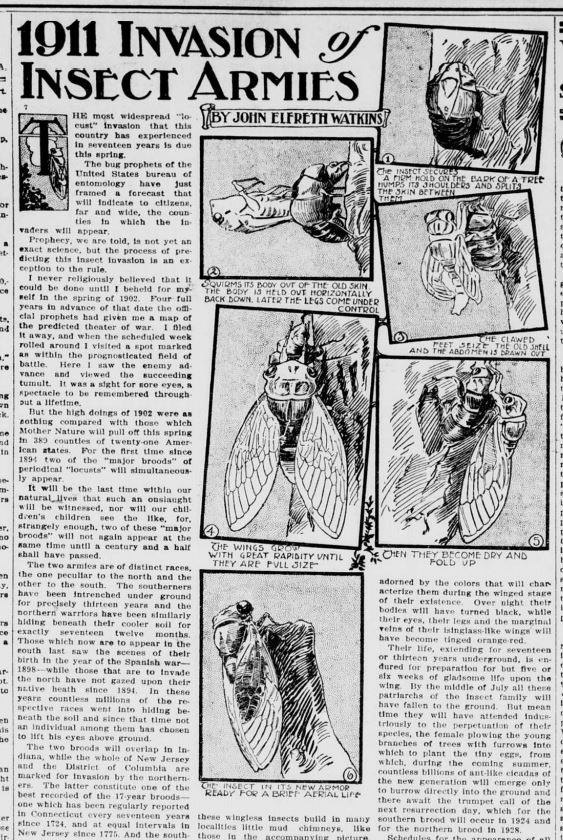The Cicadas are Coming!
Posted by Admin.April 12th, 2021
Blog post by Angela Spatafore, Program Assistant, WVRHC
I love cicadas. In fact, you can probably say it is an obsession at this point. If you visit my house or take a ride in my car, you will undoubtedly be reminded of this obsession by the cicada taxidermy on my bedroom walls to the plush cicada on my dashboard to the various art pieces I’ve collected. So naturally when I was hired at the West Virginia & Regional History Center, one of my first questions was what the Center had about cicadas in its collections. In the spirit of Brood X’s emergence later this year, let’s look at some of what I could find.

With six broods of periodical cicadas covering almost the entire state, West Virginia certainly has its fair share of history with the cicadas. Every seventeen years like clockwork once the ground warms to 64° F eight inches underground, the cicadas begin to emerge, and given their predictability, newspapers publish articles warning and educating those within range of the incoming invasions.
One of my favorite newspaper articles comes from the Ceredo Advance in May 1911. In the article, the author, John E. Watkins, describes the oncoming emergence of not just one but two broods, one of the 17-year broods and one of the 13-year broods. He remarks on how he and everyone living in his time would never witness both broods emerge simultaneously again. While this emergence occurred mostly in New Jersey, it was interesting to see how the news made its way to West Virginia. After all, there’s nothing like a cicada to get you to brood about your mortality.

Growing up, no one I knew called them cicadas. Until my obsession took over and I began pouring through book after book, I, like everyone I knew, called them locusts. After paging through newspapers from as far back as 1834 to today, apparently the term “locust” never quite went out of style. Nearly every article includes some statement explaining the difference between a locust and a cicada to the reader, but why the confusion in the first place?
Apparently the massive scale of a cicada emergence was reminiscent of the biblical swarms of locust to the settlers who witnessed the event. This anecdote was included in The Periodical Cicada of West Virginia by the entomologist William E. Rumsey, a publication I found interesting not only for its scientific content but also its discussion of regional folklore related to the insect, and while I was unable to find any photographs of past invasions in my search of the Center’s OnView collection, I was able to find a photograph of Rumsey. While obviously not a cicada himself, it was nice to put a face to the man whose words I read as I put together this post.

With that said, love them or hate them, cicadas are a part of West Virginia history, and for those of you with ties to the Eastern Panhandle or any of other fourteen states covered by Brood X, be prepared. The cicadas are coming.





